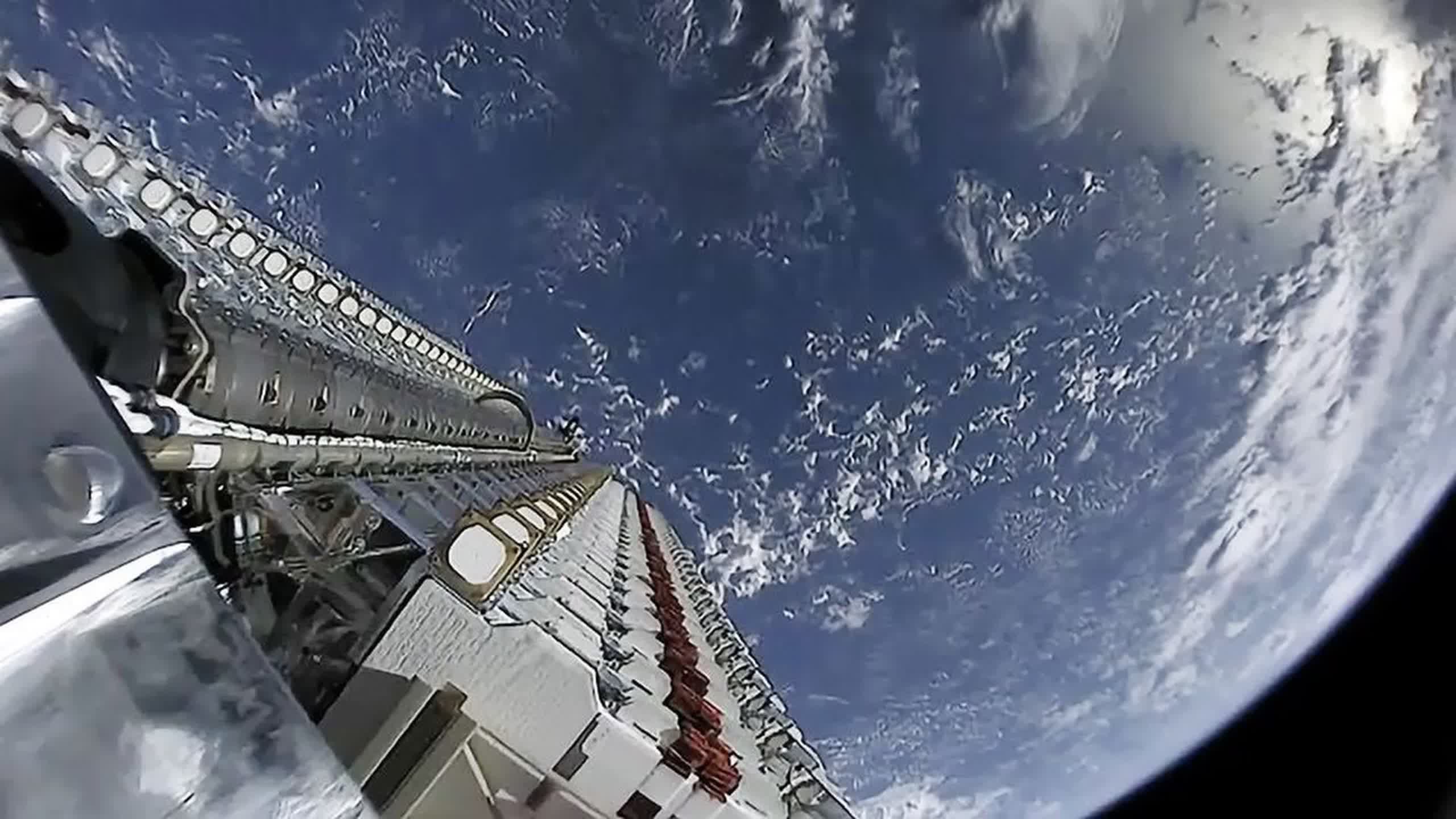In context: SpaceX is banking on Starlink to generate more revenues from its commercial and remote government applications. The recent increase in performance of a new mobile community gateway will likely help deliver that. It is now preparing to use the technology on naval ships or airplanes. It won't come cheap, however.
SpaceX's ongoing efforts to enhance and expand its Starlink service, particularly for commercial and remote applications, have taken another leap forward with its recent test of a new mobile community gateway capability that can deliver download speeds of up to 8Gbps and an upload speed of 2,794.7 Mbps.
SpaceX VP for Starlink Engineering Michael Nicolls tweeted an Ookla speed test near Jacksonville, Florida, proving the system's blazing-fast capability. Nicolls added, "no land in sight," suggesting that the test occurred at sea or in the air. A follow-up tweet from Elon Musk said gateways will soon offer over 8 Gbps, indicating that the service isn't quite ready yet.
Speedtest from @starlink's new mobile community gateway capability, no land in sight. pic.twitter.com/0gswXiyc8b
– Michael Nicolls (@michaelnicollsx) July 17, 2024
The technology extends SpaceX's existing community gateway business, which aims to provide high-speed internet to remote areas. Last year, it established its first community gateway in Unalaska, Alaska, serving customers through an OptimERA ISP. This extension is geared toward use on ships and airplanes, potentially catering to shipping companies or government clients.
The service involves significant upfront costs and monthly fees, reflecting its high-capacity specialization. Clients wanting to build a community gateway should expect to pay $1.25 million upfront, with monthly access fees starting at $75,000 per Gbps. SpaceX has already received experimental licenses from the FCC to test the service using its drone landing pad ships as gateway stations.
The expansion is not without its logistical and market hurdles. For instance, connecting cell phones to satellites hundreds of kilometers away is challenging due to the low antenna gain and transmit power of mobile devices. Starlink is competing with terrestrial networks in some applications and locations, so it has a disadvantage on a cost-per-Gbps basis, particularly against fiber optic networks.
Whether satellite internet services can eventually achieve economic viability is debatable. Questions regarding its ability to generate enough revenue to offset the enormous investment costs remain unanswered. So, its potential for mass adoption is uncertain.
Satellite market research company Quilty Space notes that SpaceX only recently turned profitable. Still, it surpassed negative expectations previously voiced by many industry veterans. The company has deployed more than 5,000 satellites and appears to have a steady cash flow and sufficient funds to invest in the future.
